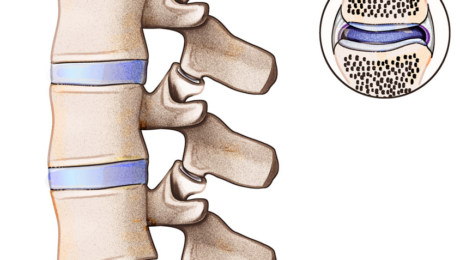Back pain is a prevalent ailment experienced by people of all ages. Some studies claim that about 23 percent of the world’s adults suffer from chronic back pain.
These staggering numbers point to its widespread occurrence worldwide. Back pain is typically caused by injury, age or just poor posture, but it can also be a sign of underlying ailments. Knowing the kind of back pain you’re experiencing can allow you to seek effective treatment in time.
What Is Facet Joint Syndrome?
Facet joints are one of the flexible parts of the spine. They are lined with cartilage and are contact points above and below each vertebrae.
These small, stabilizing facet joints ensure the spine’s flexibility while still keeping within its range of motion.
Facet Joint Syndrome is an arthritis-like condition in the spine that causes significant neck and back pain. When the cartilage on the facet joints wears thin, they cause excruciating pain. The breakdown of cartilage inside the joint causes inflammation and discomfort.
Facet joints are a source of about 15 to 45 percent of the low back pain experienced by people. Back pain caused by facet joint syndrome is caused by the inability of the joints to move fluidly. Thus, the pain is exacerbated by physical activities like leaning, walking, bending, and standing.
What Are The Symptoms?
Facet Joint Syndrome is caused when the small cartilage-lined joints in the spine become damaged. Since you need these joints for flexibility and movement, they can cause symptoms that are painful and uncomfortable:
Discomfort
Since facet joints help with your back’s flexibility you may feel both pain and discomfort while moving.
Experiencing pain when leaning backward or forward, or twisting sideways, is one of the key signs of Facet Joint Syndrome.
Tenderness
When you press on the skin where the pain is originating, you may feel soreness and tenderness. The inflamed facet joints and tighter muscles (the guarding reflex) can cause loss of flexibility.
The pain radiates
Whether you’re experiencing low back pain or cervical pain, the pain will radiate into other nearby parts of the body.
Pain from the lower back often radiates down to the buttocks and down the back of the leg; while cervical facet joints cause pain in the shoulders and upper back.
If you’re experiencing unpredictable, recurrent painful episodes, you should seek medical help from a specialists immediately.
The longer you ignore the symptoms of facet joint syndrome, the more lasting damage you can cause. Visit our back and spine center in Houston for effective relief from the debilitating pain. Facet joint pain can be managed without any surgical intervention through our various treatments.
Our experts at Houston Neurosurgery & Spine will assess your symptoms and recommend the best treatments for your back pain Houston.
Make an appointment in Houston now for an in-office assessment.

